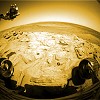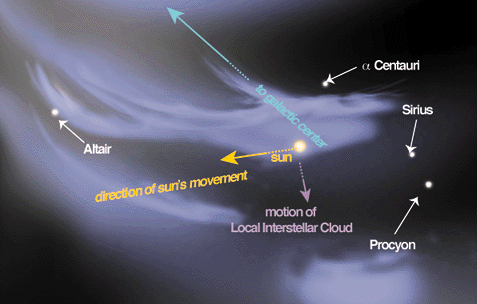 Want to know what time the moon will rise in your neck of the woods, which planet is in which constellation tonight, or when the Internation Space Station will next be overhead? There is not much stargazing going in England at the moment, too much H20 falling from the sky, but eZipSky’s free service for amateur astronomers in the US, is a kind of search engine for heavenly bodies.
Want to know what time the moon will rise in your neck of the woods, which planet is in which constellation tonight, or when the Internation Space Station will next be overhead? There is not much stargazing going in England at the moment, too much H20 falling from the sky, but eZipSky’s free service for amateur astronomers in the US, is a kind of search engine for heavenly bodies.
The eZipSky recently announced its Interactive SkyEngine, possibly the simplest way to search for many common features of the sky at night. Enter your zipcode and an object of desire – the moon, ISS, a planet, constellation – and the SkyEngine returns that object’s location or tells you when it will next be visible from your location.
Available sky objects include the sun, the moon, the naked-eye planets, the constellations, the 150 brightest stars, the brightest star clusters and galaxies, and upcoming meteor showers. It also provides hits for the International Space Station, the Hubble Space Telescope, more than 100 other earth-orbiting satellites, and, when it’s in Earth orbit, the Space Shuttle.
Imagining I was in Cambridge, MA, as opposed to Cambridge, UK, I tried out the zipcode for Harvard Science, 02138, and apparently I should “Look for the Andromeda Galaxy after it rises tonight at 20:51 and before sunrise tomorrow morning at 5:14.” The results provided also offer tips on what to search for next, so following their lead I ran a search on Mars and got a similar pair of times to watch out for it. Something that was lacking when I first visited the site was reference compass points to help newbie amateur astronomers pinpoint their objects of desire and not spend all night looking at some random twinkling object rather than the ISS, Mars, or a neighbouring galaxy.
I mentioned this to eZipSky’s Peter Busch and he tells me that the web team has now implemented my idea. Now, that’s service for you!
 A plateau on the planet Mars called Home Plate looks like it had a volcanic past, according to the latest data from NASA’s rover Spirit. The data also support earlier hints at that water once existed at or beneath the planet’s surface.
A plateau on the planet Mars called Home Plate looks like it had a volcanic past, according to the latest data from NASA’s rover Spirit. The data also support earlier hints at that water once existed at or beneath the planet’s surface. Sending astronauts up to our nearest star to reignite the Sun, the premise of sci-fi movie Sunshine, is truly the least of our problems when we are currently faced with global climate change, global terrorism, and global economic collapse. Nevertheless, astronomers are concerned about recent findings regarding the hot gas surrounding our star and its stellar neighbours. Put simply they cannot find them.
Sending astronauts up to our nearest star to reignite the Sun, the premise of sci-fi movie Sunshine, is truly the least of our problems when we are currently faced with global climate change, global terrorism, and global economic collapse. Nevertheless, astronomers are concerned about recent findings regarding the hot gas surrounding our star and its stellar neighbours. Put simply they cannot find them. No, before you switch off, this is not a Second Life clone, or anything to do with global wikis and blogs. This is the first astronomical post on Sciencebase for quite some time, but because it is not your usual run of the mill supernova announcement, or dark energy revelations, we thought it worthy of a slot. Okay, so what’s all the fuss?
No, before you switch off, this is not a Second Life clone, or anything to do with global wikis and blogs. This is the first astronomical post on Sciencebase for quite some time, but because it is not your usual run of the mill supernova announcement, or dark energy revelations, we thought it worthy of a slot. Okay, so what’s all the fuss? The latest issue of Intute Spotlight from David Bradley and the physical sciences portal is now online:
The latest issue of Intute Spotlight from David Bradley and the physical sciences portal is now online: Determining the chemical composition of 2000 stars in four of our neighboring dwarf galaxies, is a task even the biggest parallel analytical lab would probably baulk at taking on, although of course the referral fees would be stupendous. Nevertheless, a chemical survey of just such inter-galactic proportions has been carried out.
Determining the chemical composition of 2000 stars in four of our neighboring dwarf galaxies, is a task even the biggest parallel analytical lab would probably baulk at taking on, although of course the referral fees would be stupendous. Nevertheless, a chemical survey of just such inter-galactic proportions has been carried out.